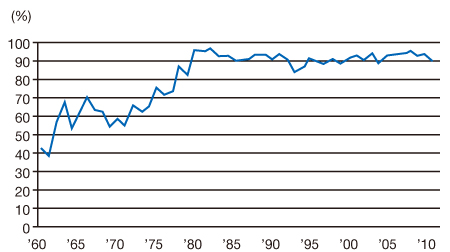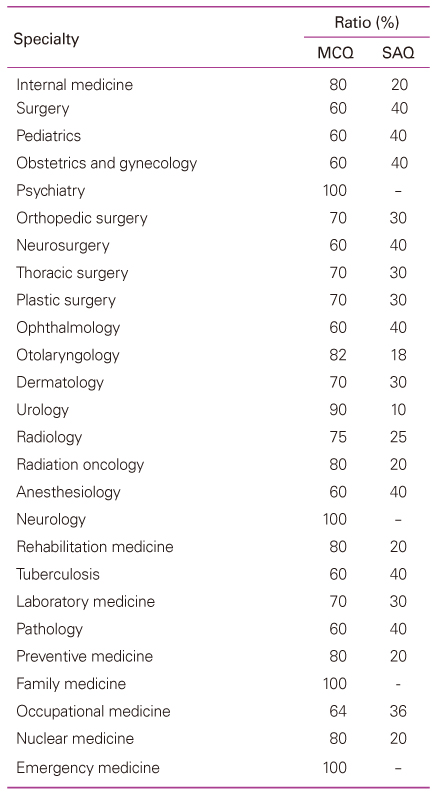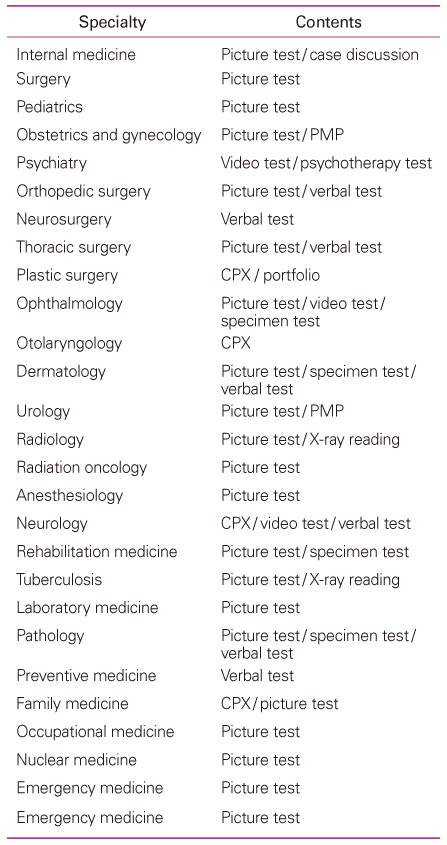 |
 |
- Search
| J Korean Med Assoc > Volume 55(2); 2012 > Article |
Abstract
Medical specialty systems were launched in 1951 by the National Medical Services Law. The following year, the specialty certifying examination had implemented in the form of portfolio evaluation. A paper-and-pencil type examination was implemented in 1960, and the 55th examination was carried out in January 2012. Currently, 26 specialties are represented, and the overall pass rate is over 90%. The examination consists of a step 1 paper-and-pencil test and step 2 skills test. In the step 1 test, the test items are multiple choice questions and short answer questions. Clinical performance examination is partially applied to the step 2 test. To cope with changes in the social situation and the growth of medical services, developmental changes are needed in the specialty certifying examinations. Performance assessment is an alternative worth considering. CPX should be a major part of the skill test. A computer-based test should be introduced as soon as possible, and it could eventually be developed into an adaptive test.
References
1. National Medical Services Law. No. 221 1951;09. 25.
2. Korea Medical Association Examination Committee. 50 Years history of specialty certifying examination 2008;Seoul: Korea Medical Association.
3. Ministry of Public Health and Social Welfare announcement no. 730. Gwanbo 1960;2593):1321.
4. Passing rate 70 percent. Euisasibo 1960;06. 02.
5. Mattick K, Bligh J. Teaching and assessing medical ethics: where are we now? J Med Ethics 2006;32:181-185.
6. Palmer EJ, Devitt PG. Assessment of higher order cognitive skills in undergraduate education: modified essay or multiple choice questions? Research paper BMC Med Educ 2007;7:49.
7. Sibert L, Darmoni SJ, Dahamna B, Hellot MF, Weber J, Charlin B. On line clinical reasoning assessment with Script Concordance test in urology: results of a French pilot study. BMC Med Educ 2006;6:45.
8. Schuwirth LW, van der Vleuten CP. ABC of learning and teaching in medicine: written assessment. BMJ 2003;326:643-645.
9. Baik SK, Chae SH. In: Baik SK, Chae SH, editor. What is CAT. Computerized adaptive testing: a new technique for educational and psychological testing 1998;Seoul: Wonmisa. 23-40.
10. Wainer H. In: Wainer H, Dorans NJ, Eignor D, Flaugher R, Green BF, Mislevy RJ, Steinberg L, Thissen D, editor. Prologue. Computerized adaptive testing: a primer 2000;2nd ed. Mahwah: Lawrence Erlbaum Associates. 2-22.
11. Lee YH. Introduction to an open source internet-based testing program for medical student examinations. J Educ Eval Health Prof 2009;6:4.
12. Huh S. Preparing the implementation of computerized adaptive testing for high-stakes examinations. J Educ Eval Health Prof 2008;5:1.
- TOOLS










